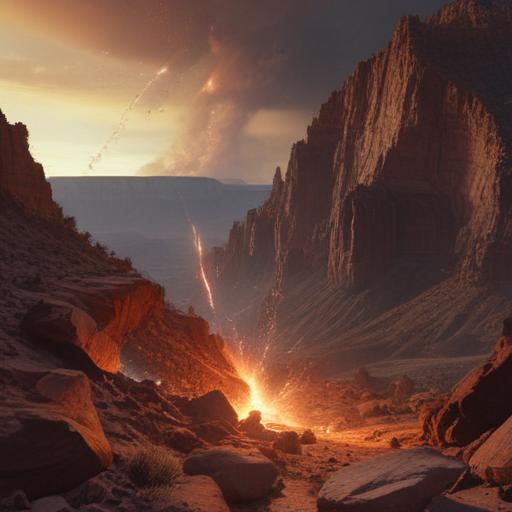A recent study published in the journal Geology by eminent University of New Mexico geologists Karl Karlstrom and Laurie Crossey explores the intriguing link between two iconic geological features of the American Southwest: the Grand Canyon and the Meteor Crater. The paper, titled “Grand Canyon landslide‐dam and paleolake triggered by the Meteor Crater impact at 56 ka,” delves into the significant coincidence in the geological timelines of a meteor impact and a landmark landslide that created a temporary lake in the Grand Canyon around 56,000 years ago.
The study’s narrative combines historical insights from past scientific endeavors and utilizes advanced geological dating methods, highlighting the collaborative work of a multinational team of researchers. In a fascinating deep dive, the authors discuss exploration efforts that trace back to the 1960s when Karlstrom’s father led research in a cave that revealed remains of ancient species and artifacts linked to the early inhabitants of the region.
Key findings of the study indicate that the ancient lake was formed due to the damming of the Colorado River by landslides triggered by the meteor impact. The researchers utilized modern dating techniques in collaboration with laboratories in New Zealand and Australia, leading to the confirmation of ages around 55,600 years for both wood specimens and sediment samples from varied locations.
Previously, Richard Hereford of USGS had theorized about a potential dam created by a landslide near Nankoweap Canyon, an idea that gained traction with the additional evidence supporting the connection between the meteor impact and the geological changes in the Grand Canyon.
Moreover, the parallels drawn between the historical findings and modern geological phenomena contribute to understanding how the Colorado River’s landscape has evolved. Notably, these insights position the Meteor Crater impact as a significant force that not only reshaped the terrain but may have also induced seismic activity that could have catalyzed the landslide.
The research ultimately advances the hypothesis that these geological events were interconnected, supported by a body of evidence that converges around the critical timeframe of 55,600 ± 1,300 years ago. These findings provide substantial insight into the past environmental dynamics and offer hope for renewing interest in geological studies in the region, potentially unlocking further mysteries about the Earth’s history and its impact on contemporary landscapes.
